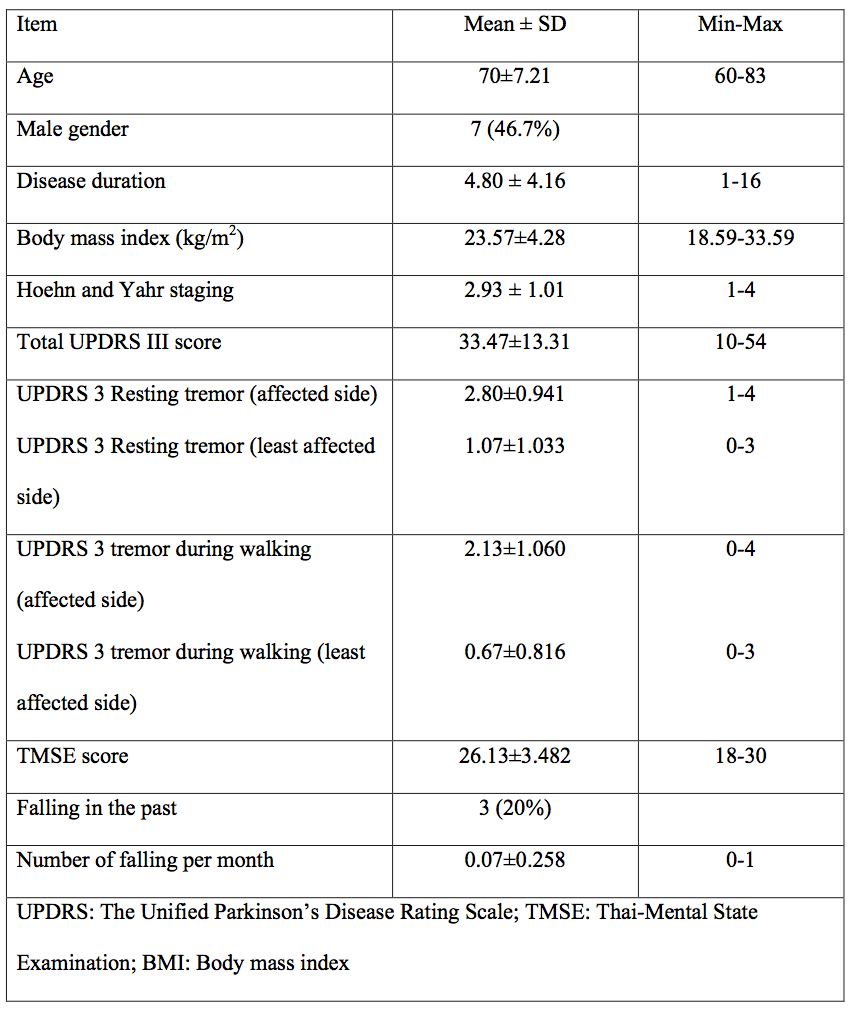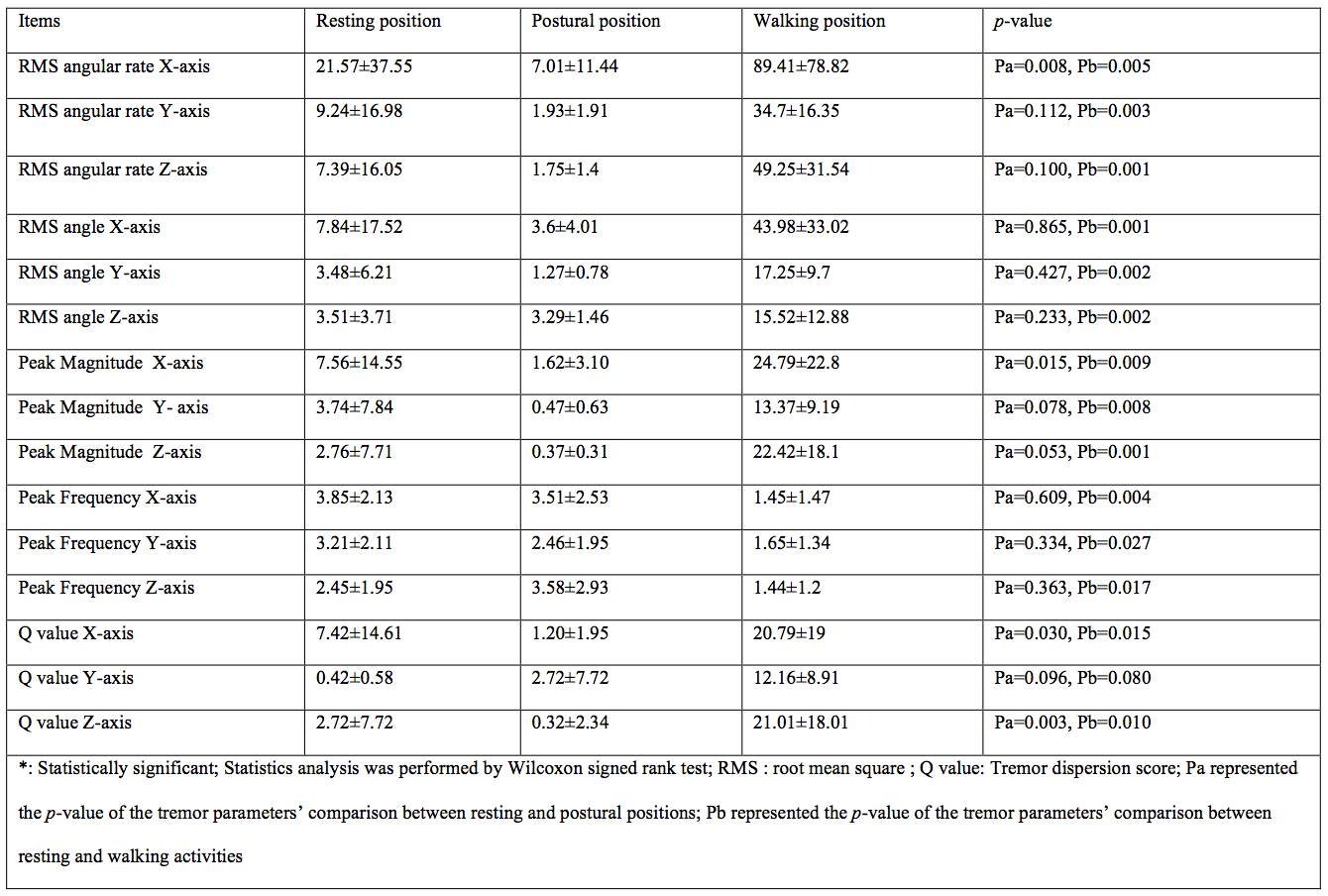Session Information
Date: Saturday, October 6, 2018
Session Title: Parkinson’s Disease: Clinical Trials, Pharmacology And Treatment
Session Time: 1:45pm-3:15pm
Location: Hall 3FG
Objective: To delineate objective characteristics of walking tremor in PD patients in relation to classical parkinsonian rest tremor with inertial sensors.
Background: Tremors in PD can have various manifestations, with the most common type being classical parkinsonian rest tremor (1). However, hand tremor can also occur unilaterally while walking, but its characteristics have not been studied.
Methods: This study was a cross-sectional study involving 15 PD patients who exhibited classical rest tremor according to the consensus criteria and unilateral hand tremor while walking (1). The tremor characteristics were objectively quantified with the inertial sensors, composing of tri-axial accelerometer and gyroscope (ChulaPD tremor device, www.chulapd.org) placed on the wrist of the affected hand (2). Standard testing protocols were applied (resting and postural positions) in all subjects. In addition, tremor recordings were also performed when subjects were instructed to walk at their comfortable speed and count the month backwards for 30 seconds. Clinical demographics, rating scales, and tremor parameters (RMS of angular rate, RMS angle, peak magnitude, and frequency) were collected for further analysis.
Results: Participants had a mean age of 70 (7.21) years, and a mean disease duration of 4.80 (4.16) years. Rest tremors were presenting complaints on all subjects. The analysis in the resting position revealed a mean frequency of 3.85 (2.13) on the predominant axis, which was relatively unchanged in the postural position, consistent with classical rest tremor. During walking, tremors exhibited a significant lower frequency with a mean of 1.45 (1.47) on the predominant axis (p=0.004). Significant differences were also observed on other tremor parameters, including RMS angular rate, RMS angle, peak magnitude, and Q value (p<0.05, each) (Table 2).
Conclusions: Based on our preliminary results, walking tremor in PD has different tremor characteristics from classical rest tremor, suggesting that walking tremor is probably not a manifestation of classical rest tremor. Further studies should be conducted to identify a possible underlying mechanism for walking tremor in PD.
References: 1. Bhatia KP, Bain P, Bajaj N, Elble RJ, Hallett M, Louis ED, et al. Consensus Statement on the classification of tremors. from the task force on tremor of the International Parkinson and Movement Disorder Society. Mov Disord 2018;33(1):75-87. 2. Bhidayasiri R, Petchrutchatachart S, Pongthornseri R, Anan C., Dumin S, Thanawattano C. Low-cost, 3-Dimensional, Office-based Inertial Sensors for Automated Tremor Assessment: Technical Development and Experimental Verification. J Parkinsons Dis 2014;4(2):273-82.
To cite this abstract in AMA style:
N. Dadphan, O. Jitkritsadakul, C. Anan, R. Bhidayasiri. Objective analysis of walking tremor in Parkinson’s disease: A spectrum of classical rest tremor? [abstract]. Mov Disord. 2018; 33 (suppl 2). https://www.mdsabstracts.org/abstract/objective-analysis-of-walking-tremor-in-parkinsons-disease-a-spectrum-of-classical-rest-tremor/. Accessed December 24, 2025.« Back to 2018 International Congress
MDS Abstracts - https://www.mdsabstracts.org/abstract/objective-analysis-of-walking-tremor-in-parkinsons-disease-a-spectrum-of-classical-rest-tremor/


